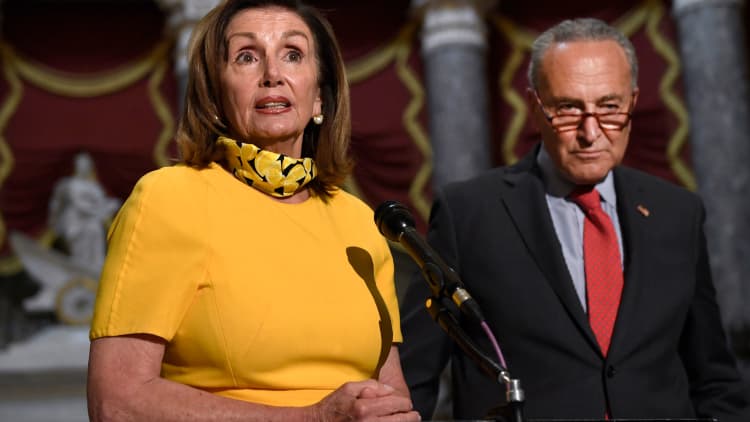
Millions of Americans are getting a big cut in their unemployment checks after the expiration of a policy that offered an extra $600 a week in aid.
A subset of workers — such as part-timers, low-wage workers, and some freelancers and contractors — will feel that cut more acutely than others.
The weekly $600 federal supplement to unemployment benefits, part of a federal coronavirus relief law enacted in March, came on top of the typical aid that states pay.
'Meager' unemployment benefits
However, state aid can vary significantly from person to person. It falls in a range between a minimum and maximum value. Most states pay minimums below $100 a week.
Hawaii, for example, pays $5 a week on the low end. It's not much higher in other states like Louisiana ($10), Connecticut ($15), North Carolina ($15), Nevada ($16), Oklahoma ($16) and Delaware ($20), according to Labor Department data.
Arizona and Washington state have the highest minimums, just shy of $190 a week. The U.S. average is $61.
The federal unemployment supplement boosted these minimum payments by $600 a week.
But that policy expired Friday, meaning people receiving the minimum (or close to the minimum) will in some cases be relying on just a few dollars a week in aid.
"Unemployment benefits can be meager without a federal supplement," said Andrew Stettner, a senior fellow at the Century Foundation. "Especially at a time when it's very difficult for many people to find a job."
Democrats and Republicans are still negotiating what to do, including whether to extend or replace the $600-a-week supplement. Officials have signaled a compromise is not close at hand.
More from Invest in You:
Pandemic is heightening stress over the $1.9 million retirement number. How you can save more
The real story about getting rich by investing in gold, cryptocurrency and IPOs
Receiving unemployment payments? Why tax season might cost you next year
Low earners and part-timers
A low minimum doesn't necessarily mean a state is less generous relative to others. They may make it easier than other states for workers to qualify for benefits. For example. Hawaii, which has the lowest minimum, paid out the second-highest average benefit in May — $466 a week.
In May, states paid an average $321 a week, according to the Labor Department.
A small share of workers receive a state's minimum weekly payment, Stettner said. Some, like part-time and low-wage workers, are more likely than others to get the minimum.
States set eligibility requirements (like having earned a certain amount of wages over the past year) to be able to collect unemployment benefits. Those who just creep over the eligibility bar often get near-minimum weekly payments.
Mixed earners
However, the technical workings of state unemployment systems means "mixed earners" — who make a living through a combination of traditional W-2 and self-employment income (1099 income, for example) — are also likely to earn a minimum benefit.
The CARES Act, the law that created the $600-a-week subsidy, also extended unemployment benefits to previously ineligible workers, such as the self-employed, freelancers, independent contractors and gig workers.
It did so through the Pandemic Unemployment Assistance program, which offers a minimum payment of half the state's average weekly benefit amount — which is generally higher than a state's typical minimum benefit for other workers.
In California, for example, the program pays $167 a week but the state has a $40 minimum benefit for all other workers.
However, mixed earners — for example, a full-time contractor who has a part-time side gig that pays in W-2 wages — receive unemployment benefits based on their lesser W-2 income. They're therefore more likely to make the minimum state benefit ($40 in California, for example) rather than the higher PUA minimum ($167 in this example).
Do you have a story to share about unemployment benefits? We'd like to hear from you. Send an e-mail to gregory.iacurci@nbcuni.com.
SIGN UP: Money 101 is an 8-week learning course to financial freedom, delivered weekly to your inbox.
CHECK OUT: The side hustle I spent $250 to start is now my full-time, six-figure job: Here's my best advice via Grow with Acorns+CNBC.
Disclosure: NBCUniversal and Comcast Ventures are investors in Acorns.






